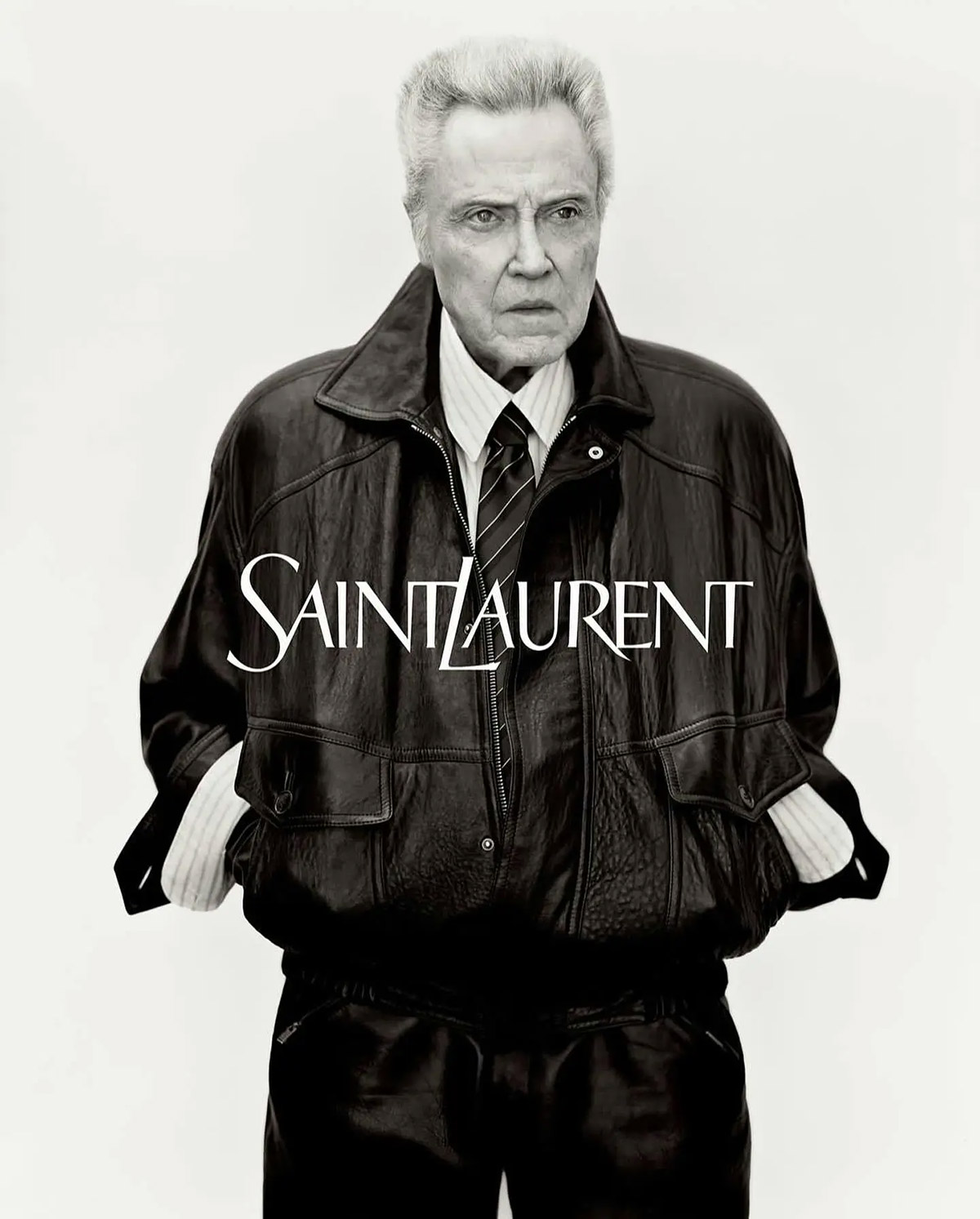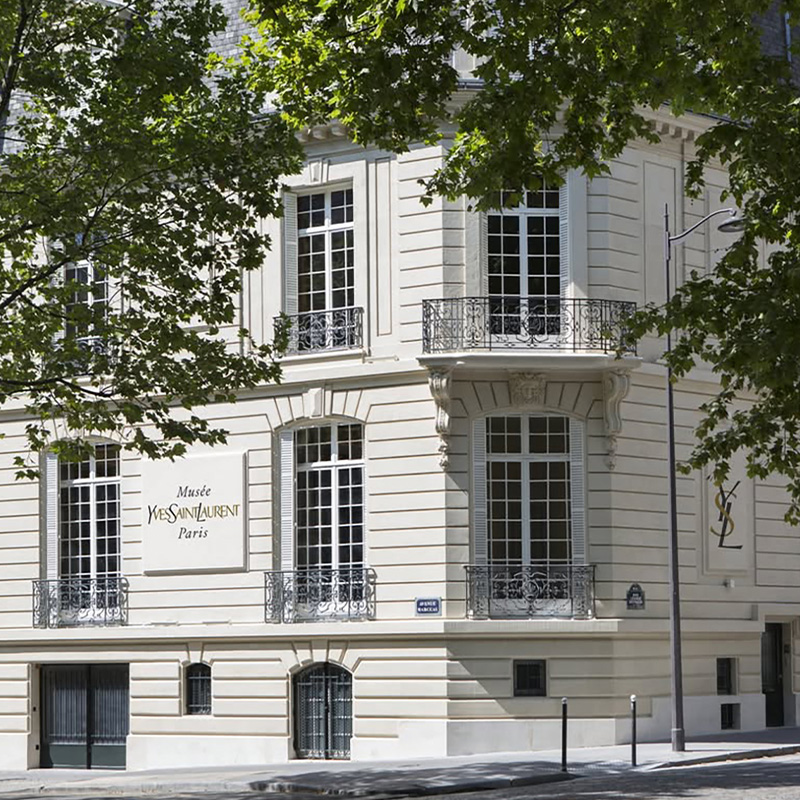Saint Laurent

- Founded In: 1961
- Founders: Yves Saint Laurent and Pierre Bergé
- Headquarters: Paris, France
- Current Creative Director: Anthony Vaccarello
- Current CEO: Cédric Charbit
- Known For: Saint Laurent is known for pioneering modern luxury with a rebellious edge, introducing iconic pieces like the Le Smoking tuxedo for women in 1966. The brand is recognized for its sleek tailoring, rock-inspired aesthetics, and timeless leather jackets that embody effortless Parisian cool. During Hedi Slimane’s creative direction, Saint Laurent redefined contemporary fashion with slim silhouettes, sharp suits, and the rebranding of the house’s name in 2012.
The iconic brand, Saint Laurent, was established in 1961 by the revolutionary designer, Yves Saint Laurent, alongside his partner, Pierre Bergé. Yves Saint Laurent had a vision to empower women through fashion, transforming the landscape with groundbreaking designs like the Mondrian shift and Le Smoking tuxedo, giving women the liberty to express themselves more boldly and freely.
Saint Laurent was a beacon of innovation in the fashion world from the outset. Dismissed from Christian Dior, he wasted no time in setting up his own workshop, introducing designs that reflected the changing times and resonated with the youth, striving for allure over mere elegance. His versatile creations drew inspirations from various cultures and strata, from the bustling souks of Marrakech to the expansive steppes of Russia, transforming ordinary attire into high fashion statements.
His designs were known for their exquisite balance between subversion and refinement. This was epitomized in his creations for Catherine Deneuve in the 1967 film “Belle de Jour,” where her elegant exterior concealed a world of unbridled fantasies.
The 1966 Le Smoking tuxedo suit was one of Saint Laurent’s most revolutionary designs, imbuing the female pantsuit with a sensual elegance, a symbol of femininity and power in a changing world, where women were beginning to assert their rights and identities more prominently.
To democratize fashion, Saint Laurent launched the Rive Gauche ready-to-wear boutique in 1966, pioneering a direct-to-customer model that challenged the prevalent reliance on couture and imitators. This move enabled the brand to expand its reach and establish a distinct identity.
Saint Laurent wasn’t afraid of controversy, as evidenced by his provocative advertisement for the Pour Homme cologne in 1971, where he appeared nude, and the 1977 Opium fragrance ad, featuring a provocatively posed Jerry Hall, which drew outrage but solidified the brand’s decadent and luxurious image.
However, the brand faced its share of tribulations. Saint Laurent’s personal struggles impacted his creativity, and by the 1990s, the brand was financially strained. It was eventually acquired by Gucci Group in 1999, with Tom Ford revitalizing the ready-to-wear line while maintaining the haute couture under Saint Laurent until 2002, when he retired.
The responsibility to uphold Saint Laurent’s intricate legacy was immense. Ford’s tenure focused on increasing brand appeal and sales, attracting a celebrity clientele, but he was often criticized for prioritizing commercial success. After several changes in creative leadership, including the influential but contentious stint of Hedi Slimane and the innovative Stefano Pilati, Anthony Vaccarello took the reins in 2016.
The brand, despite its tumultuous journey, has continued to be a stalwart in the fashion industry, honoring Yves Saint Laurent’s original vision of empowering women by offering innovative, bold, and sophisticated designs.







